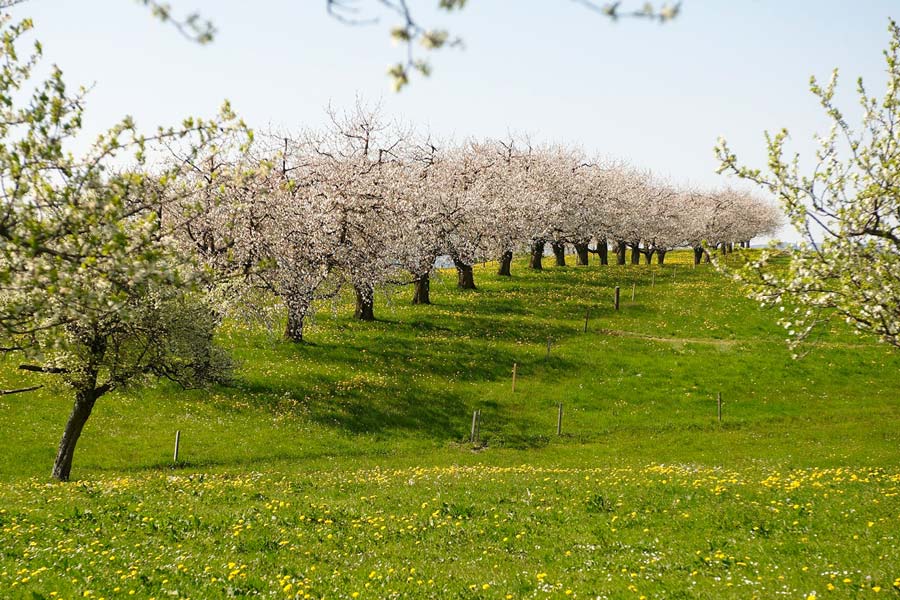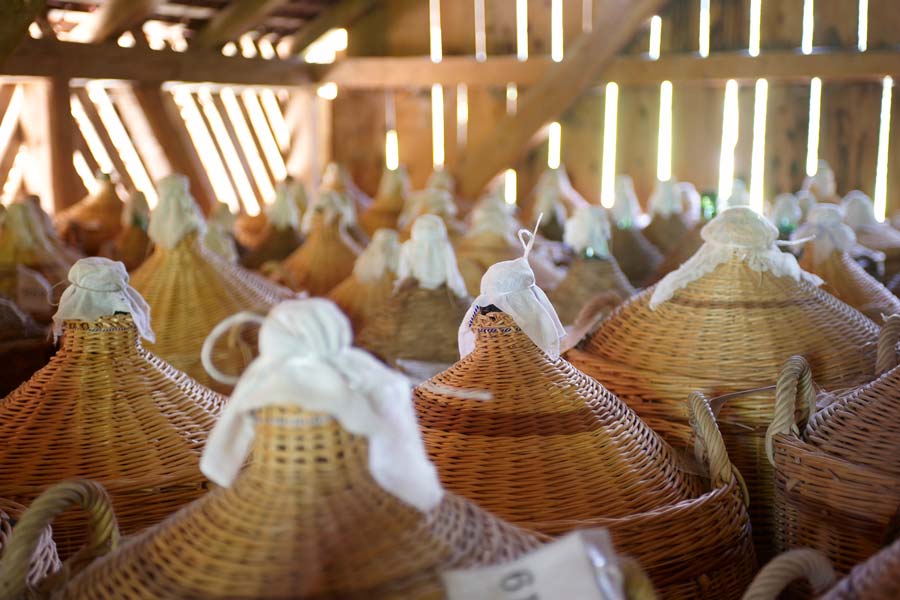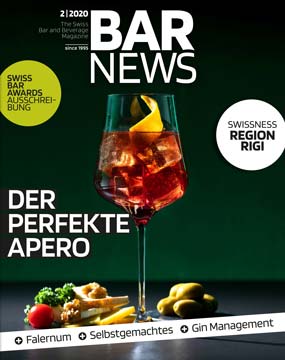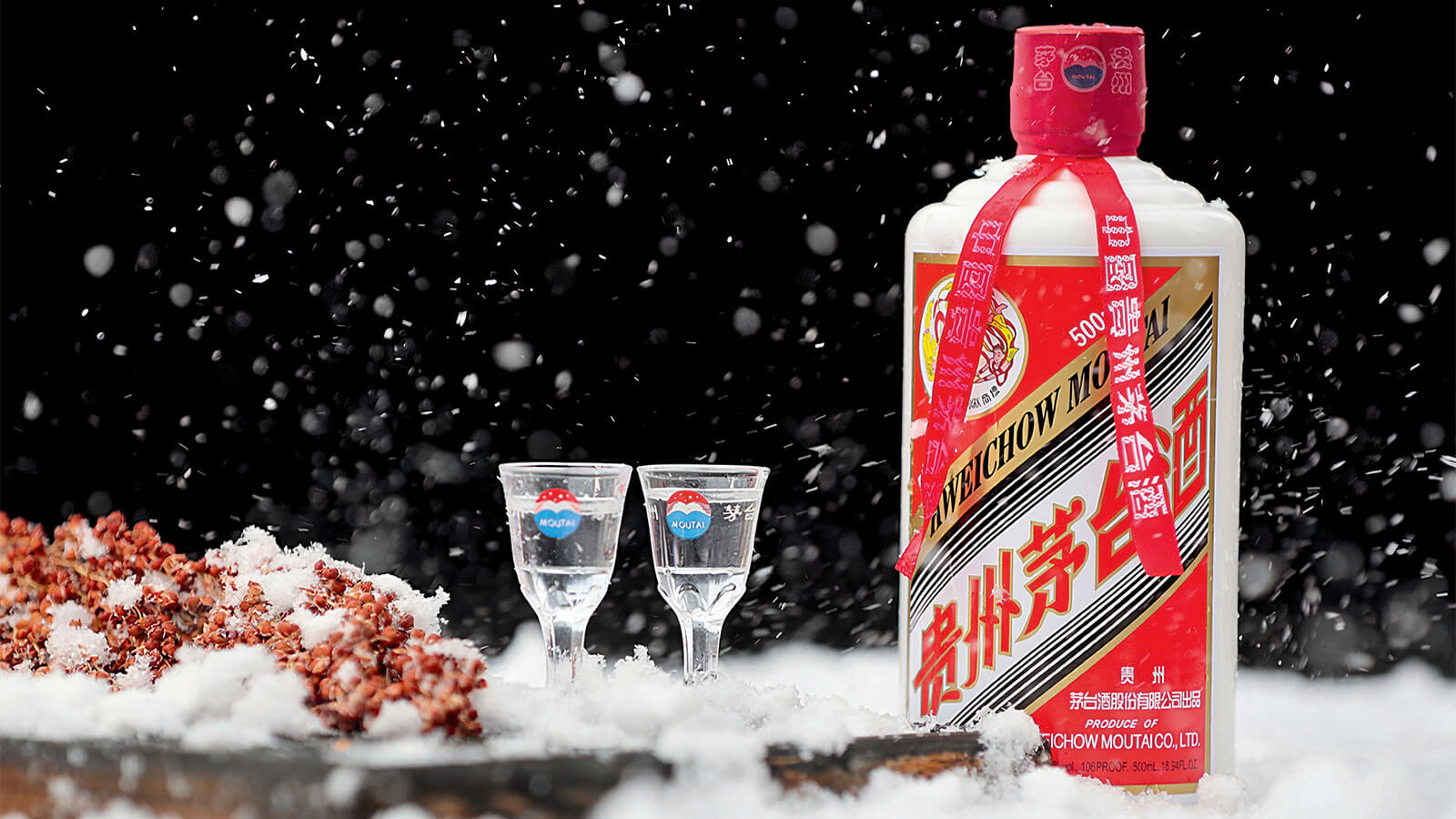But you don't just drink kirsch, you eat it. The distillate from cherries can be found in cherry sticks, fondue mixes, cherry tarts, Basler Läckerli and many other products. According to estimates, only one third of Swiss kirsch is consumed in liquid form, the rest is used in the specialities mentioned above.
But while the price issue is central to the processing industry, there is a wonderful variety of high quality Kirsch for connoisseurs to discover.
Kirschstrasse Switzerland
Oberarth, at the foot of the Queen of the Mountains, is home to the most exclusive cherry collection in the world. Here Lukas Fassbind, whose family owned the Fassbind Distillery until 1994, organises events, tastings and guided tours on the subject of Kirsch. The centrepiece is the cherry sarcophagus with a collection of 150 exclusive vintage cherry brandies from well-known producers such as Etter, Fassbind and Dettling as well as from distilleries that have long since been closed down.
Kirschstrasse Schweiz GmbH
6414 Oberarth
kirschstrasse.ch
There is hardly a more traditional distillate in Switzerland that enjoys the same status as Kirsch. Lukas Fassbind, Managing Director of Kirschstrasse Schweiz GmbH, is convinced of this. After his family sold the Fassbind distillery in the 1990s, he found employment with Arnold Dettling AG.

He recently made the most exclusive collection of vintage Kirsch available to the public. Swiss Kirsch is also appreciated abroad. Every year, about 5-10% of Swiss kirsch production is exported.
"Canada, Germany, Austria, but also Japan and Israel are among the customers," says Lukas Fassbind and adds: "Last December, I even drank an Etter cherry in Tromsø, Norway.
From the cherry to the kirsch
Even though the demand and supply of cherries has decreased dramatically over the last 30 years, Switzerland is still a cherry country par excellence. There are said to be over 800 varieties, but not all of them are suitable for distillation.
For the designation Rigi Kirsch and Zuger Kirsch, for both designations the same criteria apply, even only 63 varieties are permitted for distillation.
"Kirsch as a bulk product will no longer exist - even if it becomes more popular again."
Lukas Fassbind, Managing Director Kirschstrasse Schweiz GmbH
In this AOC region, which in addition to the entire canton of Zug also includes some Schwyz and Lucerne communities around the Rigi, cherry distillates are produced which, according to the definition, should be distinguished by a typical almond note.
Like all distillates from stone fruits, kirsch also has these almond notes from its stone. This is in contact with the mash both during fermentation and, in the vast majority of cases, during distillation.
For the distillation of Rigi or Zug Kirsch, fruits are used that are about three to four times smaller than table cherries like those you can buy in the supermarket. Their stone content is rather large compared to the fruit flesh.

Since 1992, foreign cherries may also be used for kirsch production - but not for the AOC Rigi Kirsch, which must be made from 100% Swiss fruit. These should be mashed within 24 hours of harvesting (unless the cherries are refrigerated) - without stems, leaves or twig parts.
After about 10 days of temperature-controlled fermentation and distillation, Kirsch usually rests in glass demijohns. A small opening in the cork allows the distillate to breathe.
The different types of cherries
Until 1992, it was normal for cherry producers to offer three types of cherry. A cheaper basic cherry, a reserve intended for pure enjoyment and, depending on the harvest year, a vintage cherry.
After that, single-varietal kirsch, wild kirsch and wood barrel-aged kirsch were increasingly produced. For the latter, barrels made of chestnut, cherry or Swiss stone pine are used in addition to oak barrels and barrels previously filled with other spirits.
Another speciality is Vieille Kirsch, which must have a sugar content of at least 20 grams per litre and belong to the category of liqueurs. Cherry liqueurs include cherry distillates with a sugar content of 70 grams per litre.





